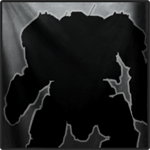Quote
This text is an ongoing effort to provide our members with the best knowledge available to us regarding PUGs. Many of us here have spent so long dropping with fellow Wolves that we have forgotten the true nature of pugging. In lieu of this weekend's tournament, I have decided to record and share my observations, as well as the observations of others, in order to minimize the emotional impact of pugging.
Chapter 1: PUG Behaviour
PUGs have been observed demonstrating pack behaviour in some instances. However, with no clear alpha male, they will often adopt a power structure more akin to that of a herd until encountering something to fight. In this herd mentality, PUGs will often leave the overly-aggressive or overly-ambitious teammates to die first, so remaining close is essential for survival. Furthermore, PUGs tend to be very timid; they will often avoid direct combat unless superior numbers are available to them. Because of this, PUGs are not a reliable source of fire support (although occasional weapon discharges to the rear torso may serve to encourage combative behaviour in some scenarios).
Chapter 2: PUG Tactics
As stated earlier in Chapter 1, PUGs will often adopt a movement pattern akin to that of a herd until encountering combat. At this point, the herd will often spread out in order to maximize the distance between teammates. As only an estimated 15% of PUGs are literate, non-verbal communication is something to use sparingly. It should be noted that in combat situations, PUGs will fire warning shots until the enemy is approximately 90m (regardless of weapon type). This behaviour appears to be an intimidation tactic.
Chapter 3: PUG Anatomy
Thus far, the only inferences able to be made on PUG anatomy are vision-related. PUGs tend to exhibit extreme cases of tunnel vision, and as a result, will often ignore the battlegrid. It also appears that a PUG's vision is motion-responsive, as an enemy will only be attacked when it is moving. As PUGs will ignore their battlegrids in combat, it is advised to lure enemy mechs in front of PUGs so that they can be attacked by multiple friendlies. It is hypothesized that their poor peripheral vision is a direct result of their extreme tunnel vision.
Ongoing Efforts
Any discovery, large or small, related to PUGs is much appreciated, and will be included in this work for future reference. If this work offends anyone, too bad.
Chapter 4: PUG Communication
While it is uncommon to see non-verbal communication field, observations have been made to suggest it occurs to a limited extent. Based on the observed communication patterns, PUGs appear to communicate in a dialect of broken English. This so-called "Puggish" is categorized by a systematic use of abbreviations and slang, using short sentences to convey simple messages devoid of any meaningful thought-provoking insight. A common analogy used to describe Puggish to an outside observer is that the language base and structure is comparable to Newspeak; a fictitious language spoken by the Proletarians of George Orwell's science-fiction classic 1984. This was observed firsthand when our resident anthropologist, Jaloko, initiated written communication with a PUG colony located in Alpine Peaks. Jaloko greeted the PUG as per customs, to which the PUG replied, "srry no englihs," which can be roughly translated to "I apologize for the inconvenience, good sir, but I am unable to effectively communicate my message to you in English." Research efforts are currently focused on creating a comprehensive English-Puggish dictionary for use in the field.
Chapter 5: Pergging
While it is not uncommon for PUGs to enter a combat situation, they will rarely do so at an opportune moment. Thus, the art of "pergging" must be employed. As the name might suggest, "pergging" is a corruption of the phrase "PUG herding" and is routinely employed to move the herd to a more idealized location, such as cover, a base, or pastures. First employed by LaserBeamCheck and Rykoo, pergging has routinely proven to be an effective means of moving PUGs. While techniques vary, a common method is to perg using a light 'mech. Their small size and sheer speed is ideal for prompting the larger, slower heavy and assault 'mechs to follow the perger. Another common method is to perg using an assault 'mech. An assault's slow speed and high visibility allows even the slowest of PUGs (take that as you may) to easily follow along with the PUG herd (hereby referred to as a "perg"). Finally, although this has not been confirmed, an ECM-equipped 'mech appears to be more effective in most instances than a non-ECM 'mech. It is hypothesized that the electromagnetic radiation from the equipment causes behavioural changes, similar to a moth being attracted to a bright light, although this has yet to be proven. This theory is currently undergoing experimental evaluation. Thus, if the aforementioned methods of pergging are to be employed, the optimal 'mechs in which do so are the Commando-2D, Raven-3L, Spider-5D, and the Atlas-D-DC.
This piece of work was done by a clan mate.
Edited by DCM Zeus, 10 April 2013 - 08:01 PM.






























